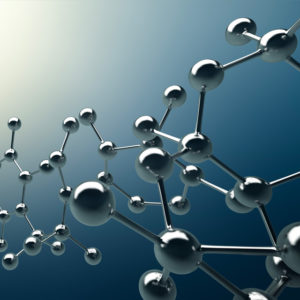Surface Area (BET) & Pore Size Determination (DFT)
Home » Our Techniques » Physical/Chemical Characterization » BET & DFT
Gas adsorption is a powerful analysis technique to determine the specific surface area and pore size distribution of solid, porous materials.
Surface area and pore size are of interest in many industries and processes that involve surfaces interacting with gas or liquids. Examples include sensors, catalysts, fuel cells, batteries and chemical manufacturing. The rate or volume of gas adsorption and the capacity of a material to adsorb gases can have a large effect on its functional usefulness. Investigating those factors can be extremely important during R&D, product development or later troubleshooting and failure analysis. For example, the pore size may have an effect on the rate of reaction or efficiency of a catalytic process. Similarly, the surface area of a material may have an effect on the lifetime or storage capacity of a battery, in addition to any surface chemistry effects that also occur at that surface.

Before performing a surface area or pore size measurement, contaminants (typically water and carbon dioxide) must be removed from the solid surface. The solid is pretreated by applying heat and vacuum to remove any initially adsorbed contaminants.
To determine the surface area, the solid is cooled under vacuum to cryogenic temperature (using liquid nitrogen). Nitrogen gas is dosed to the solid in controlled increments. After each dose of adsorptive gas, the pressure is allowed to equilibrate, and the quantity of gas adsorbed is determined. The quantity of gas adsorbed is plotted as a function of pressure. From this plot the quantity of gas required to form a monolayer over the external surface of the solid is determined. The surface area can be calculated from the quantity of gas required to form a monolayer, using the BET (Brunauer, Emmett and Teller) equation.
To determine the pore volume and pore size distribution, the gas pressure is increased further incrementally until all pores are filled with liquid. Next, the gas pressure is reduced incrementally, evaporating the condensed gas from the system. Evaluation of the adsorption and desorption isotherms reveals information about the pore volume and pores size distribution. Several methods, such as the classic BJH (Barrett, Joyner, Halenda) method or the modern DFT (Density Functional Theory) method, exist to determine pore volume and pore size distribution.
Ideal Uses of BET and DFT
- BET surface area analysis of solid materials
- Pore volume and pore size distribution analysis of solid materials
Strengths
- Simultaneous acquisition of surface area and pore size data
- Non-destructive method
Limitations
- Closed pores are not accessible via the material surface. Therefore, gas adsorption cannot be used for their assessment.
Technical Specifications
- Degassing Temperature Range: Ambient – 350°C
- Sample Capacity: 0.5 – 6 cm3 (Sample should fit into a cell with a 7 mm internal stem diameter)
- Lower Absolute Surface Area Limit: 0.5 m2
- Lower Specific Surface Area Limit: 0.01 m2/g
- Minimum Pore Volume: 2.2 x 10-6 cm3/g
- Pore Size Range: 2 – 500 nm
- Relative Pressure Range: 10-4 – 0.999 P/P0
Would you like to learn more about using BET and DFT ?
Contact us today for your Surface Area (BET) & Pore Size Determination (DFT) needs. Please complete the form below to have an EAG expert contact you.